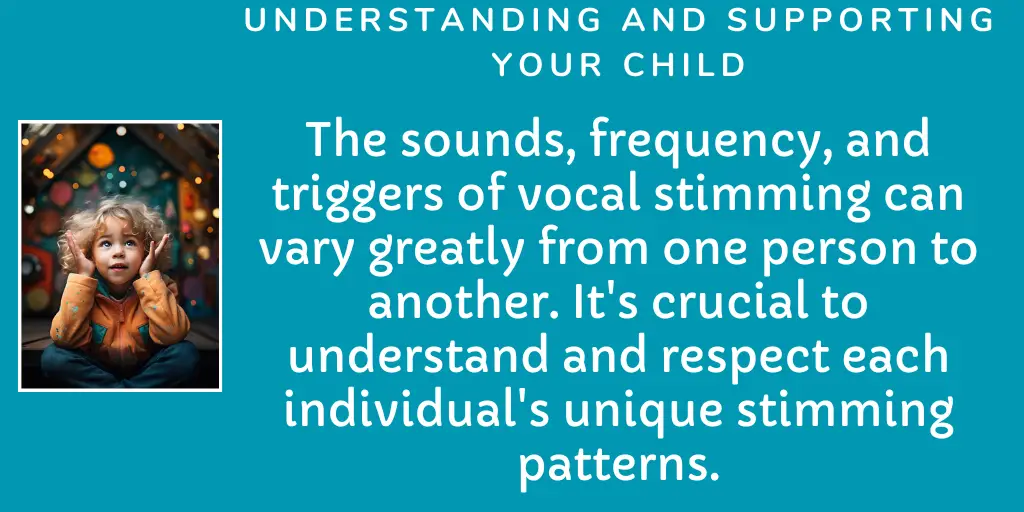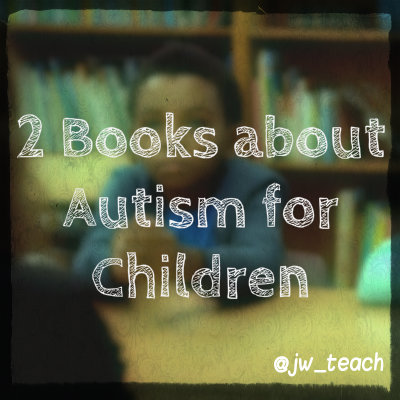Vocal Stimming and Autism: Understanding and Supporting Your Child
A Guide to Vocal Stimming and Autism
As a parent to Autistic children and an SEN teacher, it’s essential to raise awareness and understanding about the different aspects of autism (ASD). One such aspect is “vocal stimming,” a term that refers to self-stimulatory behaviours exhibited by autistic individuals, it may also be called verbal stimming. This article will delve into the specific area of vocal stimming, providing insights into why it occurs, its role in the lives of autistic individuals, and how to support your child in a way that affirms their neurodiversity. Parents might feel a little awkward at first, but they really shouldn’t! These behaviours are perfectly natural for autistic people. We all just need to chill and accept people for who they are. If autistic voices stay loud and proud, public attitudes will keep improving. No one should have to hide who they are or how they express themselves in an inclusive school or society.

What is Vocal Stimming?
Stimming, short for self-stimulatory behaviour, is a term used to describe repetitive or ritualistic behaviours that autistic often engage in. Vocal stimming, specifically, refers to auditory-based stimming behaviours. This can take many forms such as humming, shrieking, repeating phrases or sounds, and more. Autistic adults during a research study stated that stimming is an adaptive mechanism, or action, that helps them to soothe or communicate intense emotions or thoughts. They therefore object to treatment that aims to eliminate the behaviour. Vocal stims are vocalisations (e.g. muttering, grunting, stuttering, whistling, singing). Many people say these are involuntary and unconscious actions. Some autistic adults stated these are often uncontrollable but they can recognise when they are occurring and their purpose.
Why Does Vocal Stimming Occur?
Vocal stimming, like other forms of stimming, serves various functions for autistic individuals. Here are a few reasons why it happens:
- Sensory Regulation: Vocal stimming can be a way for an autistic person to manage sensory input. It can serve as a calming or self-regulation mechanism when the person is overwhelmed or as a way to stimulate the senses when under-stimulated.
- Expressing Emotions: Sometimes, vocal stimming is a conduit for expressing emotions, particularly when verbal communication might be challenging.
- Coping Mechanism: Vocal stimming can also be a coping mechanism in stressful or unfamiliar situations, providing comfort and predictability.
- Blocking of Aversive Stimuli: Stims can be used as a way of blocking sounds that the child dislikes or cannot tolerate.

Facts about Vocal Stimming
- Vocal stimming is common: Many autistic people engage in vocal stimming. It’s important to note that it’s a normal part of the autism spectrum and not something to be discouraged or stigmatised.
- Each individual is unique: The sounds, frequency, and triggers of vocal stimming can vary greatly from one person to another. It’s crucial to understand and respect each individual’s unique stimming patterns.
- It’s not harmful: Vocal stimming in itself is not harmful. However, it might be disruptive to other people (that old chestnut) in certain settings, like a quiet classroom, restaurant or library, which is why understanding and appropriate support are essential.
Frequently Asked Questions
Q: Should I stop my child from vocal stimming?
A: No, Vocal stimming, like any self-stimulation behaviour is a natural and important self-regulation strategy for many autistic individuals. Trying to stop it can cause more harm than good. Instead, aim to understand the reasons behind it and find ways to accommodate it.
Q: What do I do if my child’s vocal stimming is disruptive in certain settings?
A: Open communication is key. Discuss with your child’s teachers, caregivers or other relevant parties about the nature of vocal stimming and collaborate to create an environment where your child feels comfortable. A Reasonable adpatation may be the use of a quiet space or a break from class if the child is stressed and needs to self-regulate. Before looking to stop the stims look for the cause. Why do they need to self-regulate are they under of over stimulated? What environmental factors are contributing?
Q: How can I support my child’s vocal stimming?
A: Acceptance is the first step. Helping your child identify comfortable and appropriate environments for vocal stimming, teaching them about social context, and advocating for their needs are all supportive strategies.
Q: Is vocal stimming the same as echolalia?
A: No, although there are commonalities and overlap between vocal stimming and echolalia. Echolalia is repeating the same word or phrase, it may have a communicative intent. Common examples are repeating words when ask a question or repeating a phrase from a video to request it. Some children enjoy the sounds of certain words or phrases and may repeat them for comfort or stimulation. Whilst echolalia is more associated with words and vocal stimming is more associated with noises there are examples that switch this.
How to Support Your Child
- Acceptance and Understanding: Embrace your child’s vocal stimming as a part of their unique, neurodiverse identity. Understand its functions and importance in their life.
- Create Safe Spaces: Ensure there are spaces where your child can engage in vocal stims without fear of judgement or reprisal.
- Teach Social Awareness: While it’s important to accept and accommodate your child’s stimming, it’s also practical to help them understand social contexts where vocal stims might be disruptive. This isn’t about ceasing the behaviour but managing it in a way that respects others’ needs too.
- Advocate: Speak up for your child’s needs in various settings, like school or social gatherings. Help others understand what vocal stimming is and why it’s important to your child.
- Provide meaningful alternatives: If and only If the stims are having a significant negative impact on their wellbeing shape the behaviour, blowing bubbles, chew toys etc. Ear defenders may help reduce background noise and reduce the need for vocal stims.
Conclusion
Vocal stimming is a normal and often essential part of life for many autistic individuals. As a society, embracing neurodiversity means accepting and understanding behaviours like vocal stimming. As a parent, it’s about supporting your child in a way that validates their experiences and aids their navigation of the world. Remember, every autistic person is unique, and so is their stimming. Understanding, acceptance, and support are the keys to helping your child thrive.
Further Reading:
Kapp, S. K., Steward, R., Crane, L., Elliott, D., Elphick, C., Pellicano, E., & Russell, G. (2019). ‘People should be allowed to do what they like’: Autistic adults’ views and experiences of stimming. Autism, 23(7), 1782–1792. https://doi.org/10.1177/1362361319829628
Steward R. L. (2015). Repetitive stereotyped behaviour or ‘stimming’: An online survey of 100 people on the autism spectrum. Paper Presented at the 2015 International Meeting for Autism Research. Retrieved August 2023






